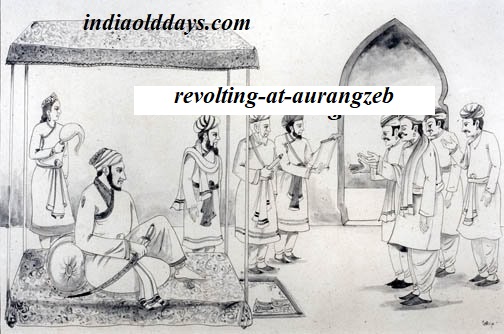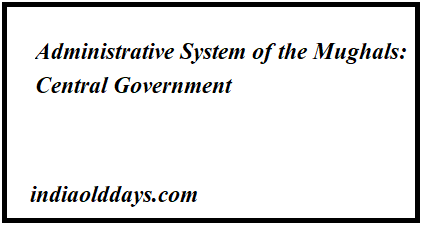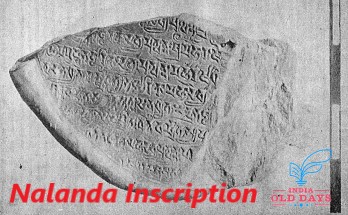Tripartite Struggle
The main reason of Tripartite Struggle is the rich state of Kannauj
After Harsh, Kannauj became the center of attraction of various powers. It attained the same place as that of Magadh until the gupt era. In fact, Harsh and Yashovarman made it a symbol of imperial power. In order to become the Chakravarti ruler of North india, it was deemed necessary to take control of Kannauj. Apart from being of political importance, the economic importance of Kannauj city also increased to a great extent and it was also proved to be an important reason for its attraction.
By taking control of this, control could be established over the Ganga Ghati and the rich commercial and agricultural resources available in it. The region of Kannauj was the most fertile region of the country, being situated between the Ganges and the Yamuna. This city was also very important from the point of view of trade and commerce, because from here the trade routes went to different directions. A route went from Kannauj to Prayag and then to the eastern coast to Kachchi in the south. The Second route went to the mouth of Varanasi and the Ganges. The third route was for Kamrup in the east and Nepal and Tibet from the north. The fourth route used to go south from Kannauj and met the Vanvasi town on the south coast and the fifth route was from Kannauj to Bajaj and then to the capital of Gujarat.
Just as Magadh controlled the trade route to Uttarapath in the past, Kannauj had also achieved the same type of situation. Thus it was beneficial to establish the suzerainty from both political and economic point of view. Therefore, the 8th century to rule over it. Tripartite Struggle started between the three big powers of – Paal, Gurjar-Pratihara, Rashtrakuta. Which was 8-9th century Is the most important event in the history of North India.
The tripartite struggle was a struggle between which powers
- Paal
- Gurjar–Pratihara
- Rashtrakuta
Tripartite struggle in details
8th century At the end of the year, the Gurjapratihar king Vatsaraj (780–805 AD) ruled over the vast tracts of Rajputana and Central India. A powerful kingdom of Paals was established in Bengal at this time. Vatsaraj’s Paal rival was Dharmapaal (770-810 AD). The Rashtrakutas established their kingdom in the south. The contemporary Rashtrakuta king of Vatsaraj and Dharmapaal was Dhruv (780–793 AD). He also wanted to take over the capital Kannauj after consolidating his kingdom in South India. Hence, the first struggle for supremacy over Kannauj was between Vatsaraj, Dharmapaal and Dhruv.
First of all, Vatsaraj and Dharmapaal tried to take control over Kannauj. As a result, both of them fought somewhere in the Doab of Ganga-Yamuna. Dharmapaal was defeated in this war. It is mentioned in the Radhanpur article (808 AD) of Rashtrakuta ruler Govind III, According to which Madandh Vatsaraj easily captured Gauraj’s Rajlakshmi and snatched her two rajatras. A reference in this regard is also found in Prithvirajvijay, According to which Chahman Naresh Durlabhraj conquered the country and bathed his sword in the waters of the Ganges Sea. Possibly he was a feudatory of Vatsaraj and on his behalf he participated in the war against the King of kings. In this way, Vatsaraj took control of Kannauj and the ruler of there, Indrayuddha began to accept his subjection. At this time Rashtrakuta king Dhruv crossed Vindhyaparvat and attacked Vatsaraj. Vatsaraj was badly defeated and ran towards Rajputana.
It is said in the Radhanpur article, that along with the fame of Vatsaraja, he also took away both the Rajchatras whom he had taken from Gauenaresh. Dhruv also advanced to the east and defeated Dharmapaal. These successes of Dhruv are mentioned in the articles of Sanjan and Surat. According to the Sanjan article, he snatched the lilaravindas and swetchatron of Lakshmi of Gauraj while running between the Ganges and Yamuna. But after these victories Dhruv returned to South India where he died in 793 AD. It is noteworthy that Rashtrakutas were the first power of the South to participate in the tripartite struggle, Those who interfered in the politics of North India invaded there. 18th century Marathas played the same role in it.
After Dhruv lost the political scene of North India, the struggle between Palas and Gurjar-Pratihar started again. This time the Palas side were heavy. The Bhagalpur inscription shows that Dharmapaal attacked Kannauj and removed Indrayudha there and made Chakrayudh king on his behalf. It says that Dharmapaal defeated Indraraj and other enemies and took control of the city of Kannauj, But gave it back to Chakrayudh in the same way, Just as Bali sacrificed three enemies to Vamnarupadhari Vishnu even after winning enemies like Indra.
It is clear that Indra is equated here with Indraj and Vishnu is equated with Chakrayudh. A description is found in the Khalimpur inscription, that Dharmapala obtained the right to anoint himself as the king of Kanyakubj, But the king of Kanyakubj was anointed with the consecration urn raised by the happy elders of Panchal. It was accepted by the kings of Bhoj, Matsya, Madra, Kuru, Yadu, Yavanam, Avanti, Gandhar and Keer, bowing their heads and thanking them. It is clear from this vivaram, that all the above rulers present in the court of Kannauj accepted the subordination of Dharmapaal. Dharmpaal became the ruler of a large territory. but his victory did not last. The power of the Gurjar-Pratihara dynasty came into the hands of Vatsaraj’s mighty son Nagabhatta II (805-833 AD). He conquered Sindh, Andhra, Vidarbha and Kalinga and attacked Kannauj and drove Chakrayudh from there. It has been said in the Gwalior Commendation that Chakraudh’s inferiority was proved by this, that he depended on others. Here others refer to Dharmapaal,
Nagabhatta was not happy just winning Kannauj, But he also campaigned against Dharmapaal. There was a war between the armies of Nagabhatta and Dharmapaal in Munger, In which Paalnresh was defeated. The Gwalior article presents its poetic description in this way – Bangnaresh with his elephants, horse and chariots, proceeded like a darkness of thick clouds, But Nagbhatta, who pleased the Trilokas, cut that darkness like the rising sun. It is clear from this description that Dharmapaal was defeated in the war. The frightened Paalnresh sought assistance from the Rashtrakuta ruler Govind III (793-814 AD). As a result, Govind III attacked Nagabhatta. The Sanjan Tamrapatra shows that he defeated Nagabhatta II and captured Malwa. Dharmapaal and Chakrayuddha automatically accepted his subjugation. Govind reached the Himalayas moving forward, But he could not stay longer in the north. Taking advantage of his absence, the kings of the south formed a union against him, As a result, he had to return to his home state soon.
After the return of Govind III, there was another struggle between the Paals and the Gurjar-Pratihar. At this time, the Paalvansh was ruled by Dharmapaal’s son Devapaal (810-850 AD). He was a powerful ruler. He ruled for 40 years and his empire was vast. The Munger article of Devpaal shows that he has crushed the pride of Utkal, Hun, Dravin and Gurjar kings. Here the king of Gurjar refers to Rambhadra, who was the successor of Nagabhatta. Devapaal was followed by Vigrahapaal(850-854 AD) and then Narayanpaal (854-908 AD). During his time, the power of the sails was weakened. At the same time, the reins of the rule of Gurjar-Pratihar dynasty came into the hands of a very mighty ruler, Mihirbhoja I (836-885 AD). He was famous in history as Bhoj. He tried to restore the prestige of his dynasty. First Bhoj conquered Kannauj and Kalanjar and mixed it in his kingdom. But he was defeated by Paal ruler Devpaal and Rashtrakuta ruler Krishna II (878-914 AD). It seems that Bhoj defeated Devpaal at the end of his rule, Because it is said in the Gwalior article that Lakshmi left the son of Dharma and offered a feast. Here the son of Dharma refers to the son of Dharmapaal. The Devali and Karhad writings of Krishna II state that he feared Bhoja. But these were the initial failures of the Bhoj. This did not cause special damage to him. At the same time, Devpaal died and the power of Paalvansh came into the hands of weak people. Rashtrakutas also attacked the Paals. This gave Bhoj an opportunity to organize his power. He strengthened his position by establishing friendly relations with the Chedi and Gehlot dynasties. He then defeated the successor ruler of Devpaal badly. At this time there was a mutual struggle between the Rashtrakutas and the Chalukyas. The Chalukyannaresh Vijayaditya and Bhima defeated the Rashtrakuta ruler Krishna II. Taking advantage of Krishna’s confusion, Bhoj defeated him on the banks of the river Narmada and snatched Malwa from him. After that Bhoja conquered the regions of Kathiawad, Punjab, Awadh etc. He established a vast empire and made Kannauj his capital. Bhoj died in 885 AD.
After Bhoja I, his son Mahenderpaal became the first ruler, who ruled till 910 AD. His articles are found in many places in Bihar and North Bengal. In which he has been called Parambhattarakaparameshwaramharajaadhirajmahendrapaal. It is clear from them that the Gurjar-Pratiharas from Paals also conquered the territories of Magadha and North Bengal. With the merger of these territories, the Pratihar-kingdom reached its climax.
Thus the 9th century for the empire. The three major powers of Gurjar-Pratihara, Rashtrakuta, Pal started with a tripartite struggle ended. It is clear that Pratihar got success in this struggle and their suzerainty over Kannauj was established. After Devpaal’s death, Pal disappeared from the politics of northern India and was not counted as a formidable force.
It seems that during the time of the Pratihar-ruler Mahipala I (912-943 AD), the Rashtrakuta kings Indra III attacked the city of Kannauj and for a short time drove the authority of the Pratihars. But the success of the Rashtrakutas was momentary and after their withdrawal the authority of the Pratihars was returned there. Now Pratihars began to be counted as the most important power of North India.
Reference : https://www.indiaolddays.com




